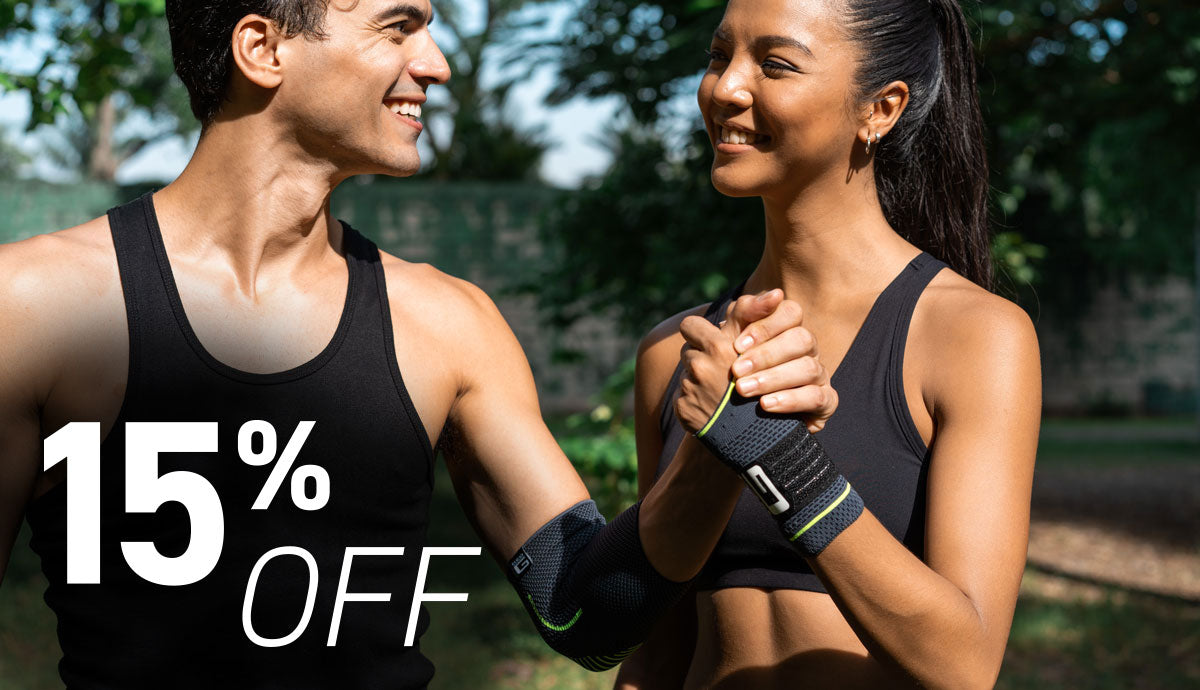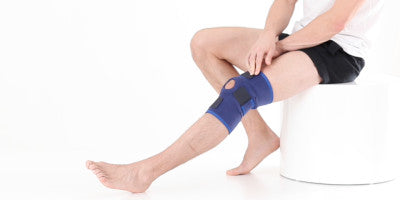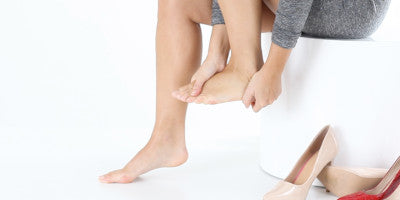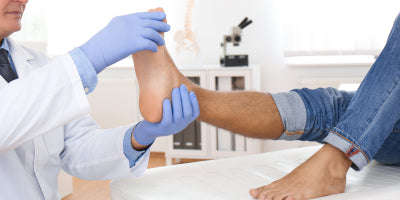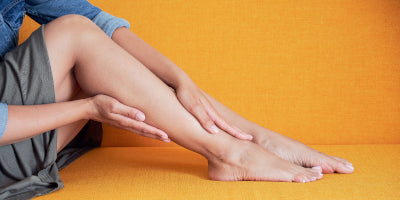
Wrist & Thumb Supports
Neo G Wrist & Thumb Supports & Braces are designed by orthopaedic professionals and medically engineered to help aching, strained, sprained, unstable, injured, weak or arthritic wrists and thumbs. All registered internationally as Class 1 Medical Devices, Neo G Wrist & Thumb Supports & Braces include the wrap around fully adjustable braces of the Variable Compression System Range. Made with heat therapeutic neoprene, VCS wrap around braces help warm muscles and joints while offering the ideal level of compression. Neo G breathable sleeve supports of the Active, Airflow and Airflow Plus ranges offer mild to moderate to firm support levels with Multi-Zone Compression, ideal for sport and active lifestyles. An ideal Arthritis solution, Neo G Arthritis Gloves offer comfort and relief from the condition.
14 products
Which wrist support do I need?
Wrist & Thumb Injuries
Our Wrist and Thumb Injury Guide explains the common signs and symptoms of conditions including fractured wrist, sprained thumb, Carpal Tunnel Syndrome and De Quervains Tenosynovitis.
Wrist & Thumb Injury GuideWrist & Thumb Injury Help & Advice
Wrist & Thumb Braces FAQ
Our experts have answered your top questions about wrist braces and thumb braces.
A wrist brace is a supportive garment or device worn around the wrist to provide reinforcement, protection and stabilisation. It is commonly used to support injury rehabilitation, manage conditions like carpal tunnel syndrome or tendonitis, reduce pain and swelling, and prevent further injury during activities.
This will vary depending on the support or brace. The dedicated How To Apply section for each product will inform you how to wear your chosen support or brace.
The duration for wearing a wrist brace after cast removal varies depending on the type and severity of your injury, as well as your individual healing progress. Your healthcare professional, such as a doctor or physiotherapist, will provide specific instructions.
A wrist brace should be firm enough to provide effective support, but it should never be uncomfortably tight. It should not restrict circulation, cause numbness, tingling, increased pain, or leave deep indentations on your skin. You should be able to comfortably move your fingers and thumb. If you experience any of these adverse symptoms, loosen the brace immediately.
Yes, to properly wash your arm brace and maintain its integrity, hand wash it in cold water only. Lay the brace flat to air dry. Do not use fabric softener, as this can break down the materials. It is also important not to tumble dry, bleach, or iron the brace.
Store your brace in a cool, dry place away from direct heat and sunlight when
not in use.
Yes, wrist braces are widely considered a good and often effective non-surgical treatment for carpal tunnel syndrome. They work by holding the wrist in a straight, neutral position, which helps to relieve pressure on the median nerve running through the carpal tunnel.
To wear a carpal tunnel wrist brace, ensure your hand is placed correctly within the brace with your palm facing down. The brace often has a metal bar or stay that should run along the palm side of your forearm and into the palm of your hand, keeping your wrist in a straight, neutral position. Your thumb should fit into the designated cutout. Secure the straps firmly but comfortably, ensuring the brace immobilises your wrist while allowing your fingers and thumb to move freely. Always check the specific fitting instructions provided with your brace for optimal positioning.
No, a Neo G wrist brace would not be suitable for tennis elbow as it would still allow wrist extension. Instead, for tennis elbow, we would recommend using our Tennis Elbow Strap or Clasp.
For De Quervain's tenosynovitis, a specialised wrist brace known as a thumb spica splint is commonly used. The Neo G Easy Fit Thumb Brace is an excellent example of this type of thumb spica splint, specifically designed to offer partial immobilisation of the thumb joint. This brace effectively limits the movements of the thumb, such as grasping, pinching, and twisting, that typically aggravate the tendons affected by De Quervain's. By preventing these painful motions, the Neo G Easy Fit Thumb Brace helps to rest the inflamed tendons at the base of the thumb and on the thumb side of the wrist, reducing irritation and allowing the area to heal.
Neo G thumb braces are not recommended to be used in bed unless advised by a medical professional.
Yes, thumb braces are very effective in helping with arthritis, particularly osteoarthritis at the base of the thumb (CMC joint). They work by stabilising the thumb joint, which reduces painful movement and provides compression to help alleviate swelling and discomfort. By limiting excessive motion, a thumb brace allows the joint to rest, which can significantly reduce pain during activities and improve overall function for individuals with thumb arthritis.
The duration for wearing a thumb brace varies depending on your condition and your healthcare professional's recommendations. For acute pain or injury, you might wear it more consistently, potentially throughout the day, removing it only for specific exercises or hygiene. For chronic conditions like arthritis, you might wear it primarily during activities that aggravate your pain, or for specific periods as advised by your doctor or therapist.
For thumb tendonitis, a thumb brace is typically worn to immobilise the thumb and wrist, allowing the inflamed tendons to rest and heal. The duration of wear can vary, but it's often recommended to wear the brace consistently for several weeks, or as long as advised by your healthcare provider. Gradually start reducing wear time as symptoms improve. It's crucial to follow your doctor's specific guidance on wear duration to ensure proper healing and avoid re-injury.
This will vary depending on the support or brace. The dedicated How To Apply section for each product will inform you how to wear your chosen support or brace.
A thumb brace is designed to provide support, stability, and compression to the thumb joint and surrounding area. Its primary functions include limiting movement to allow injured or inflamed tendons and joints to rest and heal, reducing pain by restricting painful motions and providing gentle compression, alleviating swelling through compression, supporting weakened joints especially beneficial for conditions like arthritis where joint instability is present, and preventing further injury by stabilising the thumb during activities.
Yes, thumb braces are generally considered effective for a range of conditions affecting the thumb and wrist. Clinical evidence and patient experience support their use in managing pain, improving function, and aiding recovery for conditions such as arthritis, tendonitis, like De Quervain's, sprains, and post-operative rehabilitation. Their effectiveness stems from their ability to provide targeted support, reduce painful movements, and promote an environment conducive to healing.
